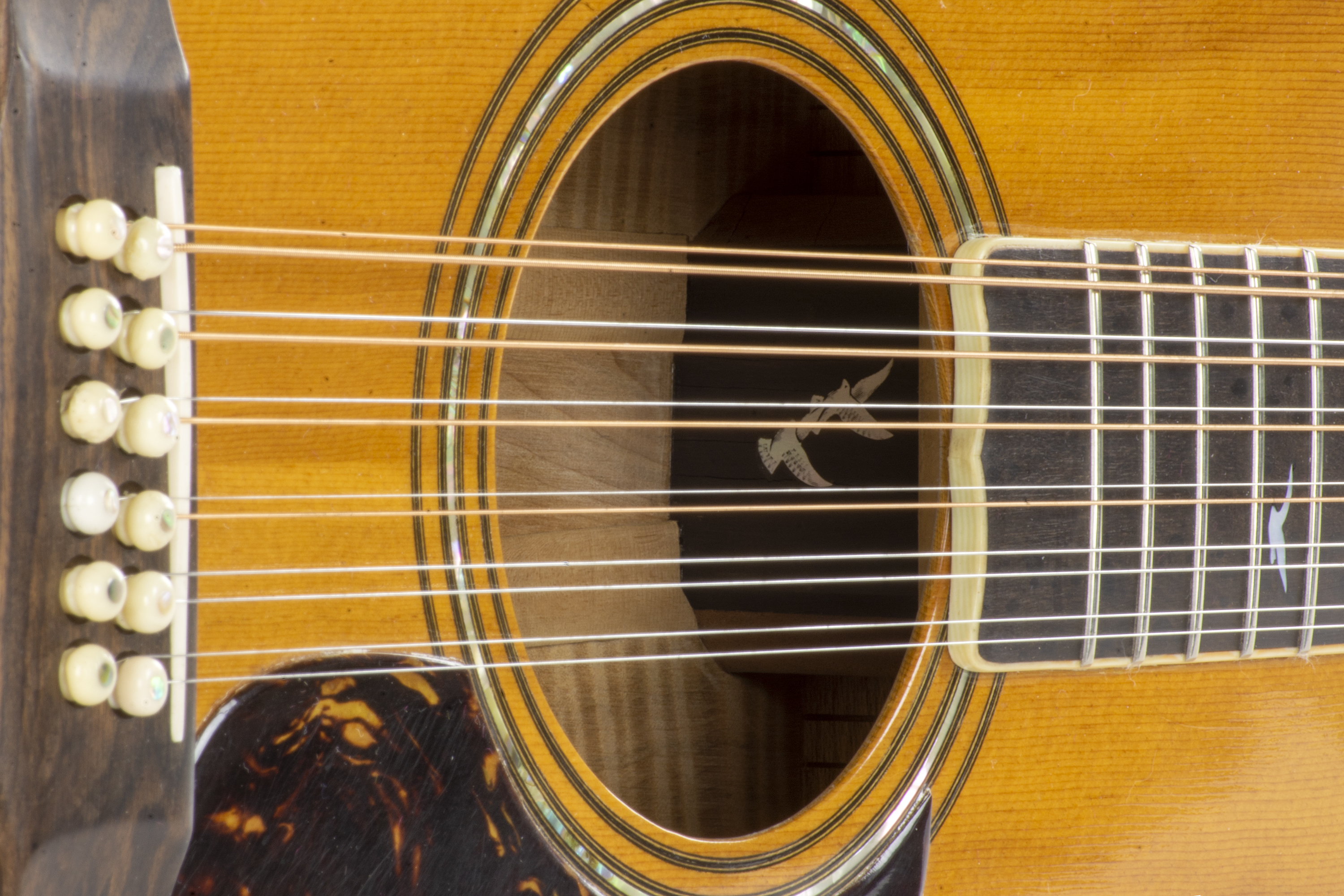
Story
John Denver and Red Rocks: Sing to the Skies
Standing in the bleachers, you’re embraced by towering red sandstone monoliths on each side. You’re encircled by a starry sky. And just above the stage is a twinkling panorama of the Mile High City. The music is secondary. But then the band takes the stage, and you remember why you’re there. Music echoes through the canyon. You hug your friends nearby, and settle in for (no matter how many times you’ve done it) a once-in-a-lifetime experience. Nine thousand cheering faces all on the same wavelength, all feeling the same energy coursing through their bodies. There’s nothing quite like a concert at Red Rocks Amphitheatre. It’s easy to see why John Denver loved this place. There’s no other venue that so effectively merged his two passions: music and nature.

Birds inside John Denver’s guitar currently on view in the John Denver Experience
Denver first played Red Rocks on July 21, 1972, a little more than one year after he released the album that would catapult him to superstardom, Poems, Prayers & Promises. As Denver took the stage with his embroidered shirt and iconic granny glasses, fans were certain he would play hits like Sunshine on My Shoulders and Take Me Home, Country Roads. What they couldn’t anticipate was the debut of a song that became synonymous with both Denver and the state he loved. “He was born in the summer of his 27th year,” vibrated through the speakers, and Denver’s poetic lyrics invited thousands to join him in becoming Rocky Mountain High four months before the song was released.
Like many of us after we get our first taste of Red Rocks, Denver couldn’t get enough of this natural amphitheatre at the foot of his beloved Rockies. He went on to play sixteen more shows on Stage Rock, and also performed soundchecks for those at the amphitheatre in the afternoon, unlike most artists. Several of the shows were televised worldwide, including a remarkable four night run in 1974, the first of its kind. “Red Rocks is my favorite place to sing. If I had my way, I’d fly in audiences and do all the shows right here,” Denver said.
While Denver and his crew most likely entered the venue through the not-so-secret tunnel leading to the underground backstage area, there are many ways to get into the amphitheatre. Some people prefer the ramp hugging Ship Rock. Others think they’re outsmarting everyone as they sneak through the shrubbery on the side of Creation Rock. My favorite pathway is the stairs at the eastern base of the venue. You start in the lower south parking lot and get sufficiently prepared for hours of open air musical magic. Then you organize your group, which sometimes can be quite difficult, and begin your trek up the hill toward the stairs. Tourists are exposed as they struggle with the incline and altitude. Winded voices discuss what song might be the opener. “Maybe they’ll debut a new song? I heard them practicing a song during sound check.”
Next time you’re filing toward the stairs, before another inevitably memorable night, look to your left. You’ll see a Pueblo Revival style building called the Trading Post. Impress your friends by telling them the structure actually predates the amphitheatre by a decade.
Within the Trading Post is the Colorado Music Hall of Fame. Inside you’ll find a fitting tribute to John Denver, its first inductee. But you won’t need to go in to see the best part. In front of the building is a fifteen foot tall, 1,500-pound bronze statue suitably named Spirit. The sculpture consists of John Denver, guitar slung on his back, welcoming an eagle to land on his arm.
♫ The man and the mountains are brothers again
Clear waters are laughing, they sing to the skies
The Rockies are living, they never will die ♫

